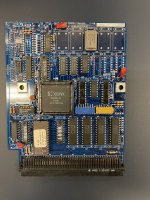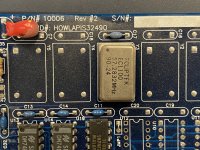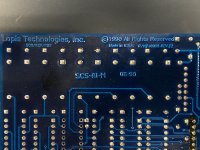fabian
Active member
I bought a "broken" SE/30. The owner said it booted but didn't display anything. When I got it i opened it up and found a PDS video card in it.
It says Lapis Technologies, it has a 9-pin d-sub output, but I don't know anything else about it. Does anyone have any information?
I am also trying to figure out what kind of monitor I can run with it.
I have found some posts on the same card but Rev #3, nothing on Rev #2 that I have, but I guess they are basically similar.
I suspect that drivers and software for this card is installed on the computer, does anyone have any idea of where I could find this, or is it not worth saving?
I have the possibility to get one of the two following monitors:
Ikegami DM-2010AD
https://ikegami-kosodate.com/dm/products/dm2010ad.html
https://ikegami-kosodate.com/dm/products/pdf/dm2010ad_spec.pdf
Hitachi CM2112MU
Similar to this
https://www.primabazar.cz/pc-konzole/crt-monitor-21-hitachi-196240.html
Would any of these work on my SE/30, would any of them work with this graphics gard?




It says Lapis Technologies, it has a 9-pin d-sub output, but I don't know anything else about it. Does anyone have any information?
I am also trying to figure out what kind of monitor I can run with it.
I have found some posts on the same card but Rev #3, nothing on Rev #2 that I have, but I guess they are basically similar.
I suspect that drivers and software for this card is installed on the computer, does anyone have any idea of where I could find this, or is it not worth saving?
I have the possibility to get one of the two following monitors:
Ikegami DM-2010AD
https://ikegami-kosodate.com/dm/products/dm2010ad.html
https://ikegami-kosodate.com/dm/products/pdf/dm2010ad_spec.pdf
Hitachi CM2112MU
Similar to this
https://www.primabazar.cz/pc-konzole/crt-monitor-21-hitachi-196240.html
Would any of these work on my SE/30, would any of them work with this graphics gard?




